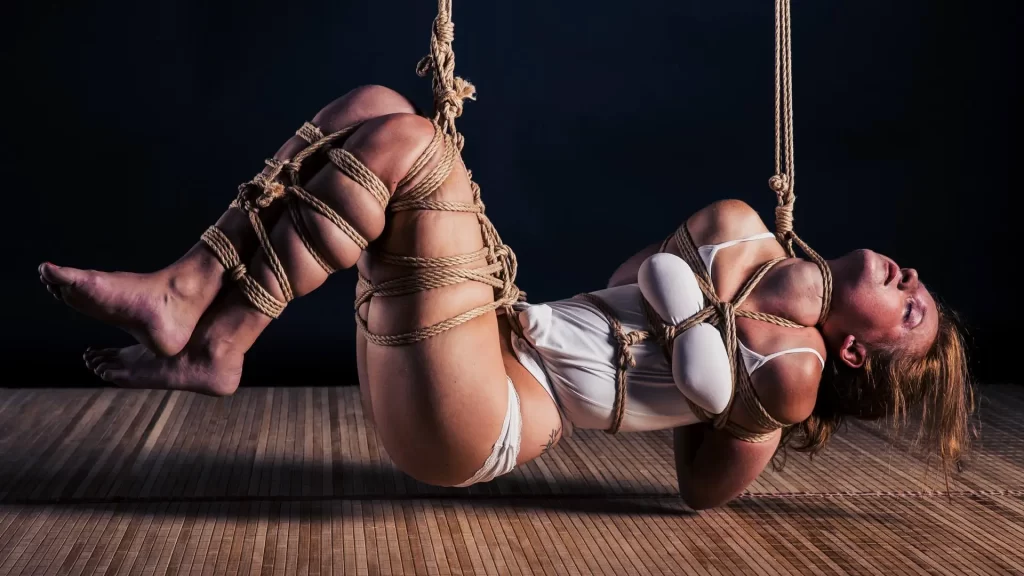Let’s start with flooring.
The most comfortable thing I’ve had is tatami. Yes, the real, traditional Japanese ones. Classic. 90 by 180. I had three of them. And they are just the best of the best.
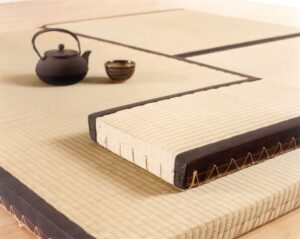
The only downside is the time it takes to find and deliver them. You can’t find them easily. You can’t even find them in St. Petersburg, which says something. I bought them almost by accident.
Now I really regret selling them.
Caring for them is quite simple. They don’t like moisture. This means you need to periodically fluff them up, air them out, and shake them out. I did this once a year. People who know say you can sprinkle something on them, but I didn’t do that. They are super durable; they’re firm yet soft (an amazing paradox). It’s literally impossible to leave carpet burns on them, no matter what you do. They clean up excellently. For bondage, they are simply the best option. Seriously. I love them.
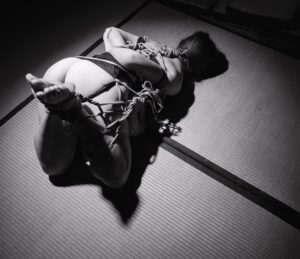
The next very good flooring option is a budo mat.
This is a synthetic equivalent of tatami. You can purchase it in sports stores or martial arts shops.
The price varies greatly, depending on the material and thickness. You shouldn’t hesitate to spend money here. Thicker, sturdier, and stiffer material is better. It’s important to lay it out properly, and if necessary, to finish the edges with wooden baseboards. There are options with “swallow’s nests,” and it can be cut to the size of the customer’s request. There are absolutely no issues with them; they wash easily with water, don’t rot, and hardly get dirty.
I didn’t have them at home for one reason only: I was interested in a certain authenticity, plus I love natural materials, so I opted for a more complicated option. But I practiced hand-to-hand combat on those mats, I rolled around on them, and I did bondage on them. And now I would choose this flooring again. Yes, there are still a few quirks. Yes, it’s not a mat that you just lay out and go. But still – it’s a really cool thing. In short, I highly recommend it.
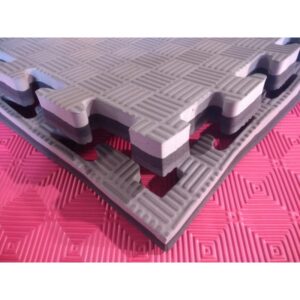
The next thing I’ll talk about is various mats. They can be made from different materials: jute, various grasses/reeds, coconut, and so on. I had one like that.
Guys, I have to say that doing bondage on it on a regular basis is just impossible. It rolls around the floor like a skateboard. It collects all sorts of rubbish around it even after you’ve shaken it out for an hour. And it crushes easily.
Also, doing bondage on it is just painful. For your knees, elbows, and pretty much any part of your body except for your feet that ends up on it. I used this moment.
If doing bondage on it regularly is impossible, then for a scene with painful bondage – it’s an indispensable item in the household. You can buy something like this for cheap in any “everything for home” store and kindly place it under your bound partner at the right moment. Well… for example, at a moment like this:
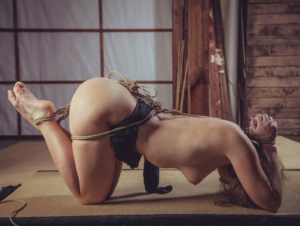
Let your imagination picture what will happen to your partner in 3-5 minutes.
So, it’s useful to have a mat. But only as a prop, not as a permanent flooring option. Therefore, it should be small, easy to clean up, and kept handy.

Now, dear reader, about carpet with thick pile.
Pros: cheap, can be rolled up and carried away, doesn’t slide around on the floor.
The downside is that wax is hard to remove from them, even with the “iron-paper” method, and they’re generally hard to clean. So, it should be something that you dirty up, throw away, and buy a new one. Overall, it’s quite convenient. But there are nuances. Like in that joke.
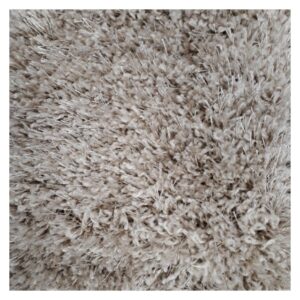
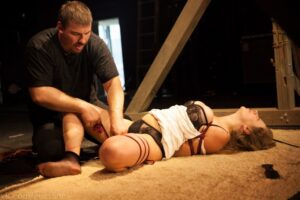
And logically, we should talk about carpet with no pile or thin pile.
This is very cheap, very easy to clean, and you won’t mind losing it. It’s quite convenient to use. I actually brought carpets to my Kinbaku club, and I worked on those carpets at home. But they have one serious downside: carpet burns. They are absolutely horrible and easily caused by this type of flooring. They heal slowly, and in particularly bad cases, they leave scars. Just a slightly more abrupt movement from your partner, or any part of them on that flooring – and it’s done, you have a burn. If you consider this nuance and know about it, you can use it quite well.

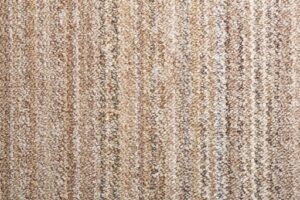
Another interesting option – I worked on a cork floor. At one time, it was trendy to have such flooring.
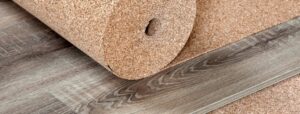
I really liked it. The sensations are unusual. There was actually a thicker version than what’s shown in the photo. It’s comfortable, not slippery, and quite soft. If you made a mat out of it – I think it would be nice. And if you find a version and put it at home – that would be quite sufficient. The downsides are that there are a ton of manufacturers, making it hard to choose a quality product. And if you find one, it’s quite expensive.
I won’t describe working on different types of linoleum, laminate, wood, tile, and porcelain stoneware; I’ll keep it very brief:
Linoleum – the thicker, the better, but it won’t save you from scrapes and burns. It’s quite usable if you’re careful.
Laminate, porcelain stoneware – hard and cold. You’ll get a ton of bruises and can’t sit on it for long. So, it’s not very suitable unless we’re talking about some standing options. And with those options – it doesn’t really matter what flooring you have, as long as it’s not ice.
Tile – in addition to the same downsides as laminate and porcelain stoneware, there’s also a chance of it cracking. Just forget about that option. Not suitable at all.
That’s about it for flooring. Next time, we’ll talk about suspension points and everything related to them. Or maybe something else. We’ll see.

